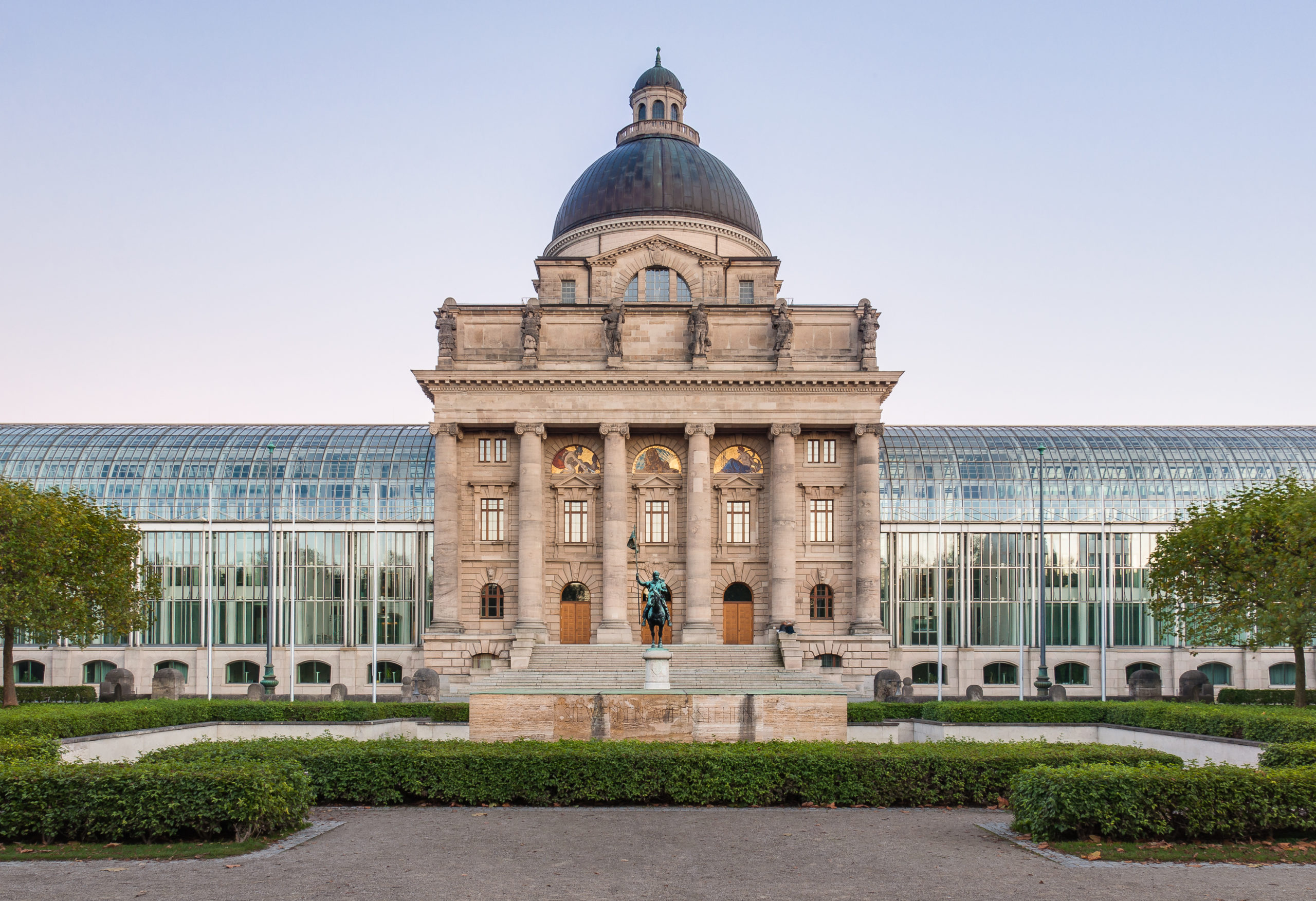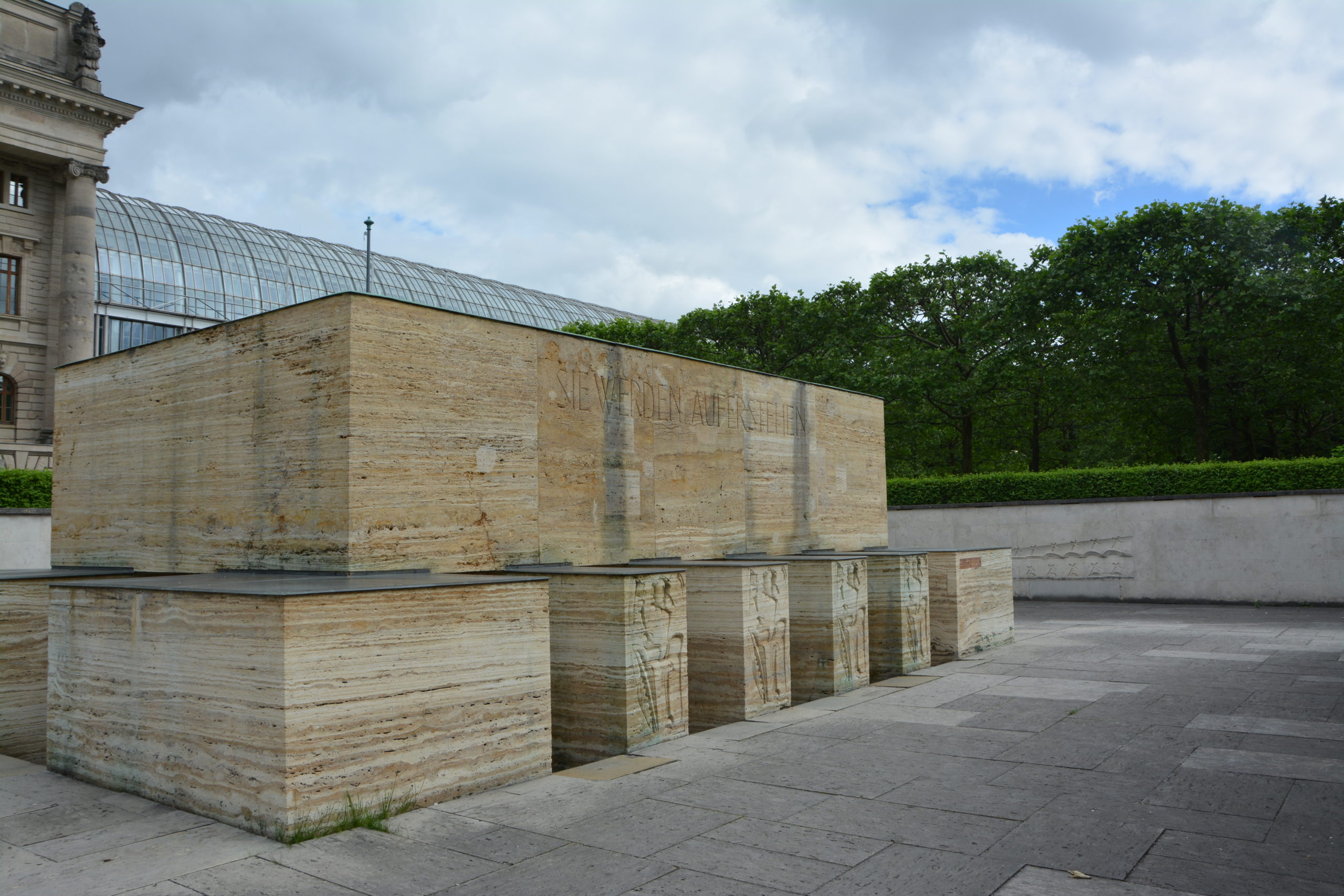Goodbye, Public object 5268
Dark Clouds
The drone shook heavily when a gust of air ascended from the Hofgarten. Lena held on to the sides of the machine, her knuckles white from squeezing the rail. She hated drone taxis. With every fibre of her soul, she hated them. The vehicle landed smoothly across from the Bayerische Staatskanzlei and deducted 15 points from Lena’s account. “And expensive as well”, she grumbled as the whirring of the drone died out in the distance. She spotted a construction droid in sleep mode in front of the glass middle section of the Staatskanzlei and feared the worst. As fast as her sleep-deprived legs could carry her, she hurried to the small monument in front of the statue of Otto I. It was still there.

Lena sighed contently and took a moment to catch her breath. Aged well over 110 years, she looked as if she was just in her mid-thirties. She found that age was the best visual representation of her youthful spirit on one side and her century of life experience on the other. A simple, yet sophisticated suit, summer jacket, and long dark hair held back firmly with a sober pin completed her look.
Some tourists still wandered around the Hofgarten, taking in the sights. During the day, the park had been in full bloom. Flowers had enjoyed a day basking in the sun and fresh green leaves gave even the oldest tree a youthful look. In the evening though, the weather had turned and dark clouds had started drifting over the park. What started as a playful wind had become a harbinger of a rainy evening. It didn’t matter to Lena. She knew she wouldn’t be there that long. She glanced around, straightened her jacket and went down the steps to the Kriegerdenkmal.

Two hundred-year-old memories
The wind immediately fell silent inside the large pit. She respectfully trod around the yellow limestone building blocks and stepped inside. Outside the temperature had still been warm, a residue of a day in the sun, but here it was cooler. Lena looked at the massive statue lying in the middle of the crypt. Two hundred years had not been kind to the image of the soldier. Its once sharp features were now softer and rounded. Still, the image was deeply touching to Lena and she had to swallow hard to push away her emotions. The soldier had a peaceful look as if he was in a deep and blissful slumber. In his hands, he held a World War I rifle.

Lena kneeled and sat down on the steps, her eyes locked on the statue. There she rested. The atmosphere was as she had always known it. From when her father took her there when she was a child and had explained about her great great great grandfather, a victim of the Great War. And about her great great grandmother and many others of her family who had died in the bombings during World War II. Since then, it had become a place of contemplation for Lena. A place of peace to keep in mind the people who had died in senseless wars but who had paved the path for civilization as it was now, almost two hundred years later. A place to say thanks.
Time
A stab of sadness hit her heart when she heard the first buzzing of a drone. It was time. It wasn’t as if she had not seen it coming. Even when Lena was a child, she had noticed how most visitors just walked past the memorial. At best they took a look at what the construction was, but the implication, the reason, was lost to the people of her generation. The older she became the fewer people cared, until now when for most people, the monument just took up valuable space.
Public object 5268
“Warning, public object 5268 named Kriegerdenkmal will be destroyed in five minutes as per decision article 9863.55. All visitors kindly leave”, it sounded. A soft whirring betrayed the arrival of the construction droid Lena had seen earlier. “I’m sorry sir, we have been ordered to remove this object. Could you be so kind as to go outside the safety perimeter?”, the droid asked in a voice that was indiscernible from a human’s. “Give me just a minute please”, Lena replied. She reached into her pocket and pulled out four small pictures. Carefully, she straightened the yellow portraits, glimpsed one last time at the faces of her ancestors and put the pictures down at the foot of the statue.

“Thank you for your patience”, she nodded to the robot and hurried out of the crypt and up the stairs. As soon as she passed through a laser indicating the point of safety, a large drone hovered over the crypt. A blue laser beam hit public object 5268 and in a cloud of hydrogen and air, the monument started to dissolve. In silence, Lena walked away, adamant to keep the memory alive even if it was only in her heart. Behind her, the beam dissolved the words on the side of the crypt.
‘Sie werden auferstehen’
‘They will rise’